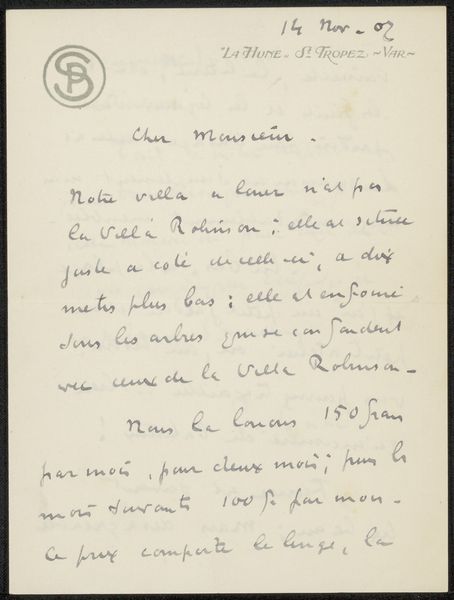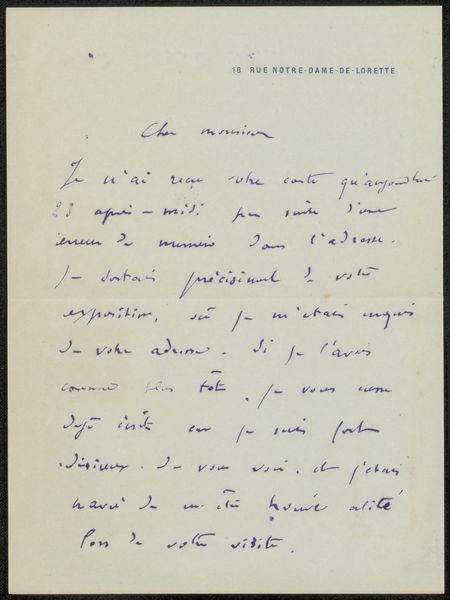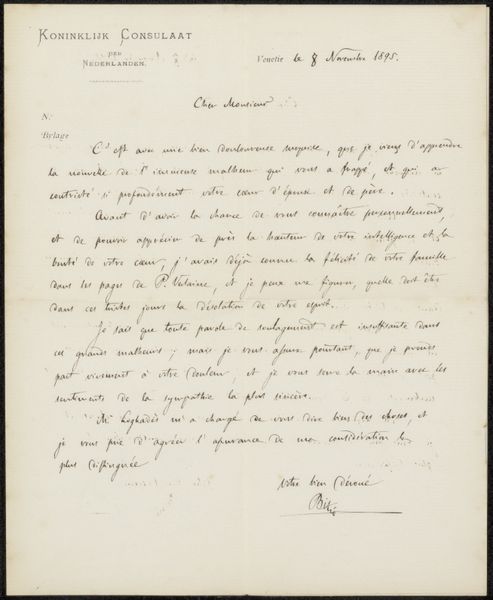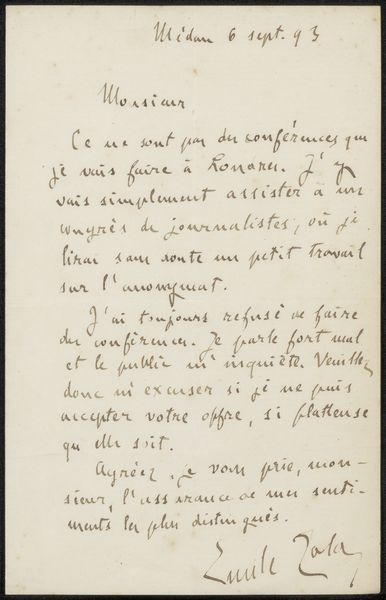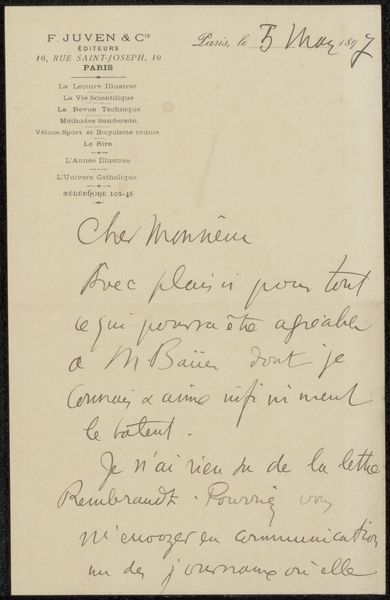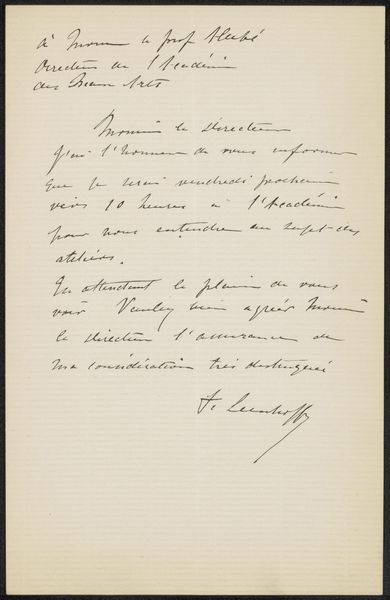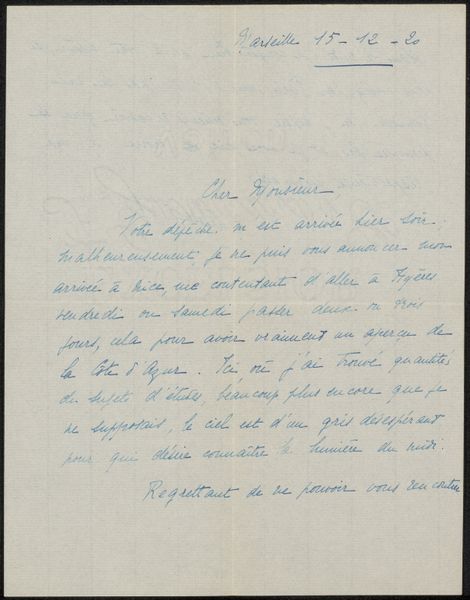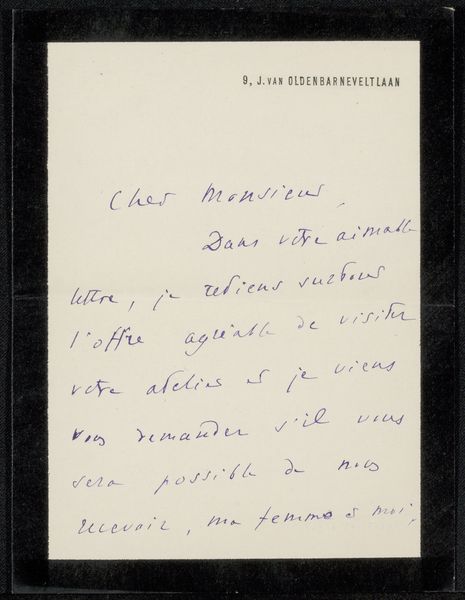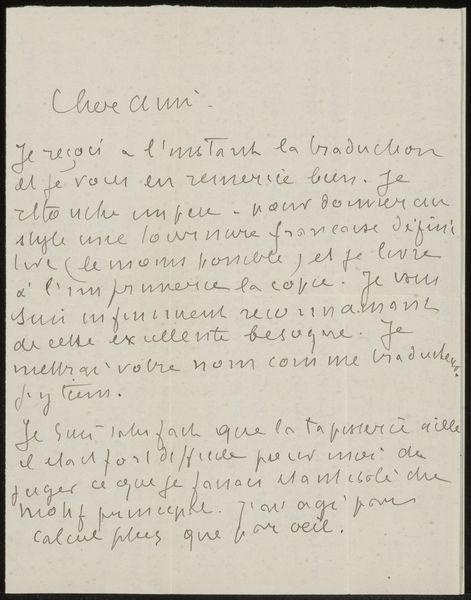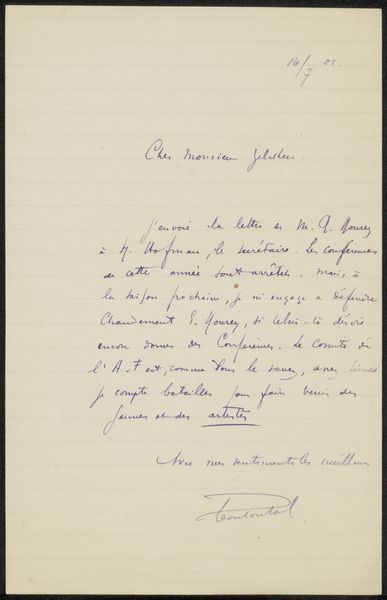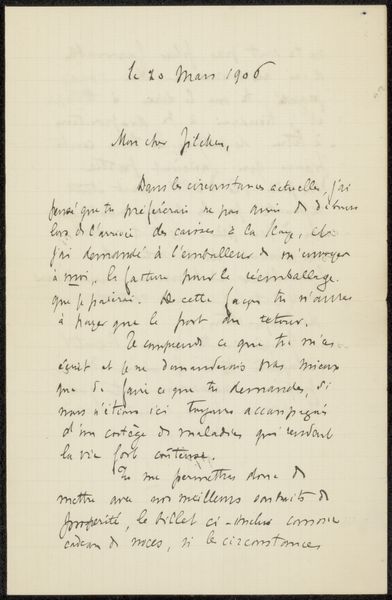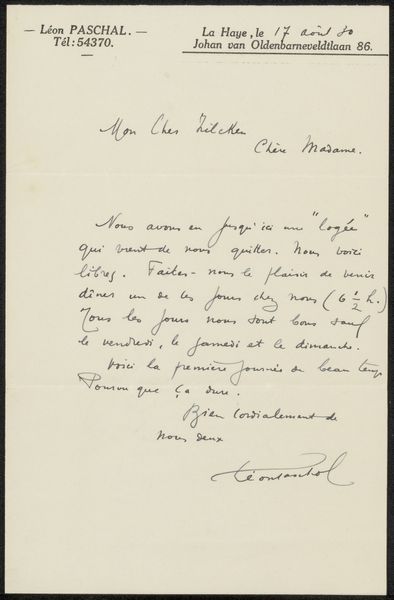
drawing, paper, ink
#
portrait
#
drawing
#
hand-lettering
#
ink paper printed
#
hand drawn type
#
hand lettering
#
paper
#
personal sketchbook
#
ink
#
hand-drawn typeface
#
ink drawing experimentation
#
intimism
#
ink colored
#
sketchbook drawing
#
sketchbook art
#
calligraphy
Copyright: Rijks Museum: Open Domain
Editor: This is a drawing titled "Brief aan Philip Zilcken," possibly from 1925, by Arsène Alexandre, rendered in ink on paper. It feels very intimate and personal, like we're intruding on a private correspondence. What layers do you see in a seemingly simple piece of personal correspondence? Curator: The power of this piece resides in its ability to collapse the distance between the personal and the historical, the private and the public. Consider that handwriting itself is a deeply embodied form of expression, and its very existence becomes a statement of human connection within a world increasingly dominated by standardized communication. How might this hand-written letter stand as a quiet act of resistance against impersonal modes of exchange, a gentle assertion of individuality? Editor: That's a perspective I hadn't considered. So, beyond just the act of writing, are you suggesting the content of the letter itself contributes to this sense of...resistance, maybe? Curator: Exactly. Letters have historically served as vital tools for marginalized communities to communicate, organize, and build solidarity networks, often in defiance of oppressive systems. Though we do not know what exactly the letter says, understanding the role of written communication in history asks us to acknowledge its revolutionary potential for preserving identity, challenging dominant narratives, and fostering connection. Editor: It’s fascinating how looking at an artwork through that lens changes everything. Now I’m wondering who Philip Zilcken was, and how this letter connected them both. Curator: Precisely. Engaging with historical context allows us to understand this intimate gesture as a potential element of larger societal dialogues and social forces. It is about centering untold stories and marginalized voices. Editor: I definitely have a new appreciation for what this drawing represents. Thanks so much. Curator: The pleasure was all mine, especially when there’s room to grow from shared insights.
Comments
No comments
Be the first to comment and join the conversation on the ultimate creative platform.
